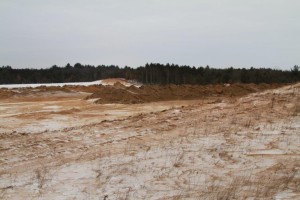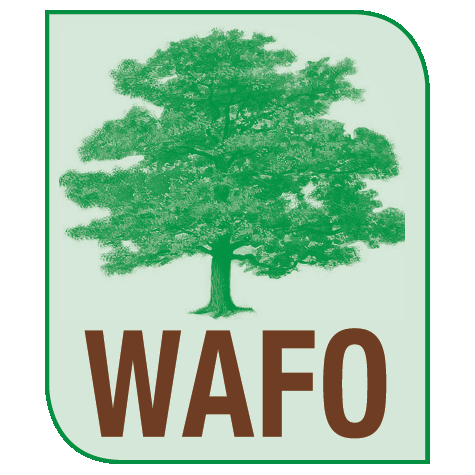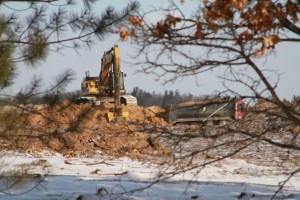Property Tax Tip – Now is the Time to Review Your Land Classifications
WAFO Lobbies for More Support from DNR County Foresters
Cutting Notices Need Not Be Approved by DNR Foresters
Adams County – A Tragedy in the Making
Lobbying Efforts to Rescind the Ban on Leasing Lands in the MFL
Getting the Word Out – New WAFO Regional Representatives
Join WAFO Today!
Materials You Can Use
Property Tax Tip – Now is the Time to Review Land Classifications
Assessors are currently updating assessment rolls and may be sending you a notice if your assessment has changed. Don’t miss this window of opportunity to ensure you’re not paying more property taxes on your woodland than you need to, whether or not you receive a notice of assessment change. Keeping property taxes low is imperative if we are to be able to grow timber in Wisconsin as a business.
As a woodland owner, it is in your best interest to know how your land is classified and to understand how lands are valued for taxation purposes. Agricultural lands (corn, beans, hay, etc) are taxed under a use value system. Agricultural forest and undeveloped land has a separate classification and is taxed at 50% of fair market value (FMV). Here’s one example to show how tax rates can be dramatically different.
Town of Ridgeway, Iowa Co.
Agricultural – Tax/acre =$3.11
Undeveloped – Tax/acre=$34.60
Agricultural Forest – Tax/acre= $38.53
Productive Forest – Tax/acre= $76.19
To see how taxes on these different land uses compare in other towns, use WAFO’s tax app found on our website’s home page www.wafo.org.
It is not uncommon to discover that a land’s use is often misclassified. Lands enrolled in an eligible state or federal program are often classified as “undeveloped.” More correctly, they should be classified as “agricultural” and receive a lower tax rate. Woodlands on a parcel with “undeveloped” land are taxed at 100% of FMV. If located on a parcel with “agricultural” land, woodlands are most often taxed at 50% of FMV.
Another common error is to see that lands enrolled in the Managed Forest Law are valued at FMV when they should be valued as agricultural forest if located on parcels with agriculture classification. Why does this matter? It doesn’t matter how much your tax payment will be, but it does matter if your land is ever prematurely withdrawn from the MFL. Withdrawal penalties would be DOUBLE if the land was incorrectly valued.
To learn more about how rural lands are classified, you can contact us at info@wiafo.org and we’ll email you a copy of the Wisconsin Department of Revenues Agricultural Assessment Guide for Wisconsin Property Owners.
Note: We provide WAFO’s Charter Members (those who have contributed $500 or more) with a free preliminary evaluation of how their property is taxed and suggestions on how their lands may receive a more favorable tax treatment.
WAFO Lobbies for More Support from DNR County Foresters
The Governor’s budget now being debated recommends cutting 4 positions out of the 628 positions funded by the state’s Forestry Account. WAFO is lobbying to ensure that these cuts do not include the county field forester positions that provide important support to private woodland owners.
A few years ago there were approximately 100 full time equivalent field foresters whose primary responsibility was to work with private woodland owners. These foresters wrote management plans and provided additional support. Today, there are only 69 field foresters. This low number now means that landowners must hire private cooperating foresters to provide the support that was previously provided by DNR foresters. We believe this current allocation of positions by the DNR is short-sighted at best given that private landowners provide 2/3 of the timber used by our industry. Read our letter to DNR Secretary Cathy Stepp.
Cutting Notices Need Not Be Approved by DNR Foresters
Current law requires that all landowners and loggers planning to cut forest products on private lands file a cutting notice with the County Clerk’s office prior to the start of cutting. Forest products include logs, pilings, posts, cordwood, pulpwood and whole tree chips, Christmas trees and firewood cut for re-sale. In addition, if the cutting is to be from DNR tax law lands (MFL and Forest Crop lands), a landowner must also first receive DNR approval to ensure the cut conforms to the landowner’s management plan.
A component of Governor Walker’s proposed state budget would remove the requirement for DNR approvals if the cutting is consistent with the management plan and has been approved by a Cooperating Forester. Cooperating Foresters are those who have met basic educational requirements and who have entered into an agreement with the DNR to provide forestry consulting services.
WAFO’s concern with this proposed law change is that the private landowner is ultimately responsible should there be a problem with a cutting. Should the landowner receive poor advice from the Coopering Forester and proceed with a cutting that violates the MFL agreement, what recourse do they have? In a worst case example, the DNR could order a forced withdrawal from the MFL. In other situations, the landowner may be required to take actions needed to restore their woodland to be in compliance with MFL requirements.
Although landowners might have legal recourse against their Cooperating Forester, getting restitution would likely be difficult given that many Cooperating Foresters have limited assets or insurance and are organized as small businesses operating as a limited liability corporation.
WAFO is recommending that if this proposed legislation is adopted, landowners not be held liable for mistakes made by a Cooperating Forester. To be safe, we recommend that landowners always receive prior DNR cutting notice approval to limit their risk of violations and significant penalties.
Adams County – A Tragedy in the Making
 Wisconsin landowner’s Bill Euclide and Joseph Nawrot are working hard to get zoning protections put in place while they watch the forests in their county being destroyed. Forest land in Adams County is rapidly being cleared and converted to more intensive agricultural uses. With approximately 6000 acres of land being prematurely withdrawn from the MFL, even with penalties of $350,000 in last year alone, it is clear that the ability to grow timber cannot compete with other land uses.
Wisconsin landowner’s Bill Euclide and Joseph Nawrot are working hard to get zoning protections put in place while they watch the forests in their county being destroyed. Forest land in Adams County is rapidly being cleared and converted to more intensive agricultural uses. With approximately 6000 acres of land being prematurely withdrawn from the MFL, even with penalties of $350,000 in last year alone, it is clear that the ability to grow timber cannot compete with other land uses.
Nawrot recently told us “Touring the area in Adams County its clear to see the destruction of what’s actually happening right in front of us, have you noticed it yourself? Thousands upon thousands of woodland and lowland acreage is being converted into agriculture lands.
I’m not referring to small family size farms clearing a few trees but rather something much bigger going on.
Areas that are currently in the path of this destruction in Adams County are townships such as Preston, Quincy, Springville and Rome, just to name a few. Former lands of Plum Creek Timberlands are having the biggest impact as they have sold large tracts of lands and are seeing high capacity wells and irrigation systems installed. Woodland parcels are being leveled and lowlands with waterways are somehow granted permission to be filled with sand to level out the terrain.
In the Town of Preston I’ve noticed the heavy ‘mining’ taking place with the dozers and excavators working tirelessly while the dozens of dump trucks hauled endless loads of sand from the natural ridges in fields to low areas along Bingham Creek.
Similar practices might soon be happening in the Town of Rome in northern Adams County where talks of nearly 40 more wells permits could be on the table awaiting approval. With the heavy irrigated farms, homeowners would be advised to check their wells for high nitrate levels. Take notice and see the big picture of how fast these woodlands are being lost and the sand is blowing off the fields that don’t have cover crops on them. Take a look around your town. If it hasn’t happened yet, it may just be a matter of time before you see the woodlands lost in your neighborhood too”.
Unfortunately, the clearing of woodlands is not limited to Adams County. Wisconsin’s central sands region, which encompasses eight counties, is a prime area for irrigated agriculture. Growing trees is a losing proposition these days.
A similar situation is occurring in Minnesota. Here’s an article from the Star Tribune that discusses how they are struggling to slow deforestation in their state.
Lobbying Efforts to Rescind the Ban on Leasing Lands in the MFL
We are working hard to see the biennial budget amended to rescind the ban on the leasing of MFL lands. We’ve had meetings with most members on the Joint Finance Committee and legislators who are interested in forestry issues to discuss how the MFL was put in place and how it makes it very difficult for landowners to continue to produce timber without the ability to receive income between harvests.
Continued contacts are needed if we are to see this change made. Now is the time to make our voices to be heard. By contacting your legislators and making a contribution to WAFO, you will help us continue this important work. To find out who your legislators are, go to the Wisconsin State Legislature website at: http://maps.legis.wisconsin.gov/.
Getting the Word Out – New WAFO Regional Representatives
Wayne Raisleger and Clyde Samsel have recently volunteered to serve as Regional Representatives of WAFO. Raisleger owns woodland in Racine County and has been very active in lobbying efforts, meeting with key representatives from his area in southeast Wisconsin. Clyde Samsel, a long-time woodland proponent, owns and operates Samsel LTD, a sawmill and saw shop located in the central Wisconsin town of Hancock.
If you or someone you know would be interested in serving as a Regional Representative, please email us at info@wiafo.org.
View a description of Regional Representative roles and activities.
There are 155,000 private landowners in Wisconsin who own more than 10 acres of forestland. Clearly developing a connection with these landowners is important to let them know what our legislators and agency regulators are up to.
Membership in WAFO is FREE. By simply providing an email address and information on where your woodland is located, you’ll become a member. Members will receive regular updates on what’s happening at the Capitol and will occasionally be asked to contact their representatives when issues arise. We will not sell or use contact information for any other purpose.
Charter members are those who have contributed $500 or more to help us get started also receive a preliminary analysis on how their land should be, or could be, classified by their assessor to receive a lower tax rate. One Charter Member recently found out that he could save $1,000 on his future tax bills through this analysis.
A Business Associate membership category is now available.
We hope you will join us in disseminating information in support of WAFO and Wisconsin’s private woodland owners. Below are a few tools that we have developed to aid in your efforts.
WAFO Informational Flyer
WAFO Talking Points

